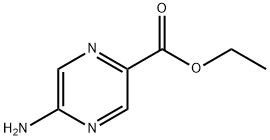How can AI models be used to design materials that stick strongly underwater, especially soft hydrogels? It seems challenging because making a material softer usually reduces its adhesive strength. Are there natural examples that inspire these designs? Also, how reliable are these AI-designed hydrogels in practical uses like fixing leaks in wet environments? Can they maintain their adhesive power over long periods, even under harsh conditions like waves or water pressure? What potential applications might these super sticky hydrogels have beyond just repairs, for example in medicine or wearable devices?
How Does AI Help Create Super Sticky Hydrogels That Work Underwater and Fix Leaky Pipes?
Related Products More >
-
- 112945-52-5
- USD 5.0000
- 10kg
-
- 9000-65-1
- CNY 1.2000
- 25kg
-
- 99208-50-1
- Request For Quotation
-
- 919-30-2
- Request For Quotation
-
- 9016-00-6
- Request For Quotation
-
- 7085-85-0
- Request For Quotation
-
- 68928-76-7
- Request For Quotation
-
- 6683-19-8
- Request For Quotation


 沪ICP备2021018848号-5
沪ICP备2021018848号-5


Natural inspirations include adhesive proteins from bacteria and mollusks, which use catechol groups and electrostatic interactions to displace water and bond underwater—mechanisms AI incorporates by analyzing protein sequences for such functional motifs.
Practical reliability is shown: R1-max withstands ocean waves on rocky surfaces, while R2-max seals 20mm pipe leaks for over 5 months, enduring water pressure. Chemically, their crosslinked networks retain integrity under mechanical stress, with hydrophilic domains maintaining hydration without losing adhesion.
Beyond repairs, biomedical applications exploit biocompatibility: as prosthesis coatings, they form stable interfaces with wet tissues; in wearables, they adhere to skin during sweating. Unlike synthetic glues relying on harsh solvents, these hydrogels use water-friendly chemistry, avoiding tissue damage.
A key distinction from traditional adhesives is their dynamic bonding—adjusting to surface irregularities via viscoelasticity while forming covalent/non-covalent bonds. Misconceptions that softness 必然 undermines strength are refuted: AI-optimized molecular arrangements enable both, opening avenues in medical devices and marine engineering.
The reliability of AI-designed hydrogels is evidenced by their long-term performance in harsh conditions. R2-max sealed a 20-mm pipe leak for over five months, suggesting robust resistance to water pressure and microbial degradation. This durability stems from cross-linked polymer networks optimized by AI to resist swelling and maintain interfacial bonds. Beyond repairs, such hydrogels could revolutionize biomedicine: prosthetic coatings could integrate seamlessly with tissues, while wearable sensors might adhere to sweat-prone skin without irritation. Their biocompatibility and tunable mechanics, derived from nature’s designs, enable applications where traditional adhesives fail. The fusion of AI and bioinspiration thus unlocks materials that transcend conventional limits, merging adaptability with tenacity.